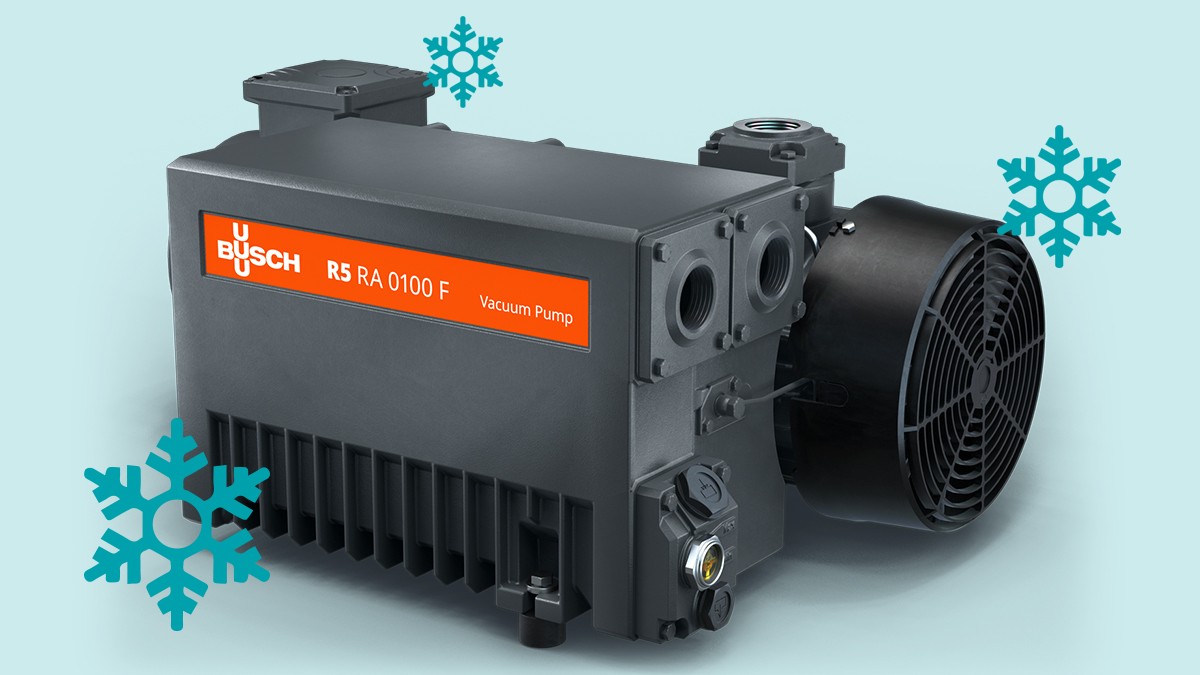With the winter season upon us, safeguarding the performance and longevity of your vacuum pumps becomes a top priority. Cold weather poses unique challenges that can affect the reliability and efficiency of these crucial industrial components. At Busch Vacuum Solutions, we understand the importance of winterization in preventing corrosion, freezing, and other potential damage. In this guide, we’ll share invaluable tips to ensure your vacuum pumps continue to operate optimally during the colder months.
1. Periodic start-ups
Much like a car engine, vacuum pumps left idle, especially in cold weather, benefit from occasional start-ups. This practice ensures the distribution of oil on lubricated components, preventing corrosion. Additionally, periodic warming of the pump helps clear any condensation, further mitigating the risk of corrosion.
2. Oil changes
Lubricating oil can thicken over time, exacerbated by the presence of contaminants. Cold weather can further increase the viscosity of the oil, leading to a higher starting current being required, potentially causing inconvenient power trips. Consider servicing your vacuum pump, including an oil change, before anticipated cold weather or a shutdown. Changing to fresh oil at the end of a season removes contaminants, providing superior protection to lubricated components. Certain special vacuum pump oils are also available with improved corrosion resistance and can help you to protect your vacuum pump during wintertime.
3. Coolant
For pumps with coolants, such as our COBRA dry screw vacuum pumps, annual coolant changes are recommended to prevent degradation that may impact the fluid’s ability to prevent freezing. Opt for certified premixed coolant with known performance properties, concentration and corrosion protection.
4. Water-cooled pumps
In pumps directly cooled with water, ensure continuous water flow during cold weather to prevent freezing. Draining the water from the pump during extended periods of inactivity, especially in sub-zero temperatures, is good practice to avoid potential freezing and subsequent damage.
5. Insulation and heat tracing
It's important to regularly inspect the condition of lagging materials that provide heat insulation to vacuum pumps and associated pipework. Look for signs of damage, wear, or moisture ingress, and confirm secure installation. Pay special attention to areas where lagging may have been removed for maintenance or where accidental damage could occur. For systems with heat tracing, ensure it functions correctly. Consider using a thermal imaging camera to identify hot spots, especially if heat tracing is absent. Note that meaningful thermal imaging results without heat tracing require the contents to be hotter than the ambient temperature.
6. Filtration maintenance
Regularly check and empty filtration systems that collect water to prevent freezing-induced cracking. Those with polycarbonate bowls can be especially brittle and prone to cracking. Ensure water-separating filters are emptied before any shutdown to avoid complications during inactive periods.
Proactive winterization measures are crucial for maintaining the reliability and efficiency of your vacuum pumps, ensuring your equipment is well-prepared to tackle the challenges of the winter season. Don’t let the cold compromise your operations – safeguard your investment with our expert maintenance tips.

Picture: Busch Vacuum Solutions